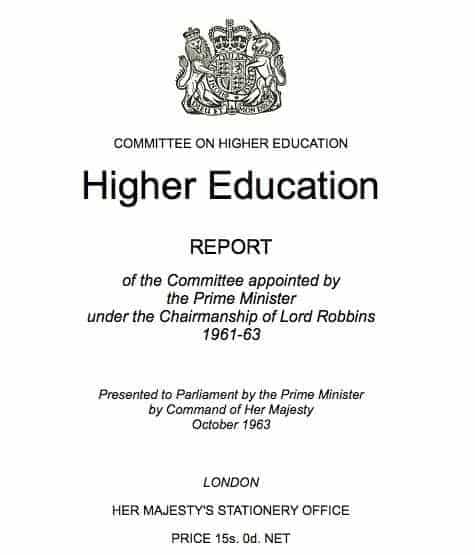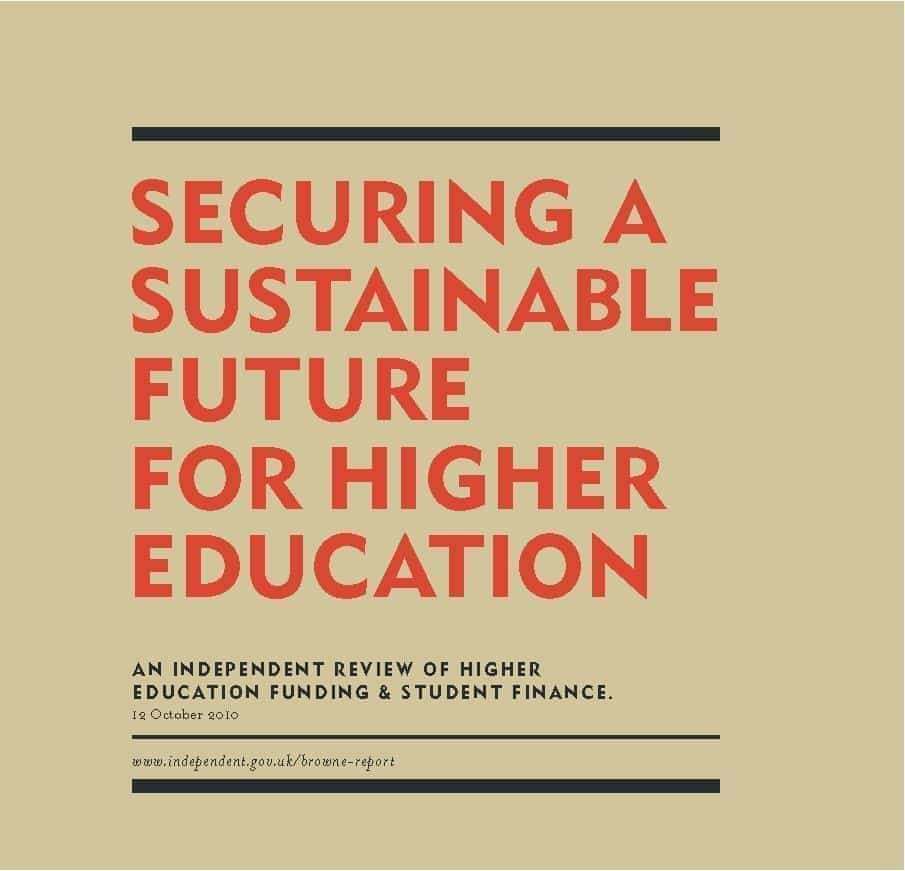Standards from Reynolds to Johnson

The Minister for Universities and Science, Jo Johnson, writing in The Times on 1 July made a number of observations about quality and standards as part of his introduction to the as yet rather vaguely defined Teaching Excellence Framework or TEF:
We need to ensure all students receive excellent teaching that encourages original thinking and prepares them for the world of work.
…
Students rightly expect their degrees to hold their value over time. My judgment, as well as that of many in the sector, is that the UK’s traditional approach to degree classification is no longer enough to provide the recognition that hardworking students deserve — or the information that employers require.
…
Taken together, a sharper focus on teaching, an assessment system that demands consistent engagement from students and a degree classification system that maintains the value of hard-won qualifications will challenge all institutions and all students to reach their full potential.
Whilst in many ways the discussions around TEF may feel like an entirely new ball game it is possible to see them as just another phase in a long running debate about academic standards. It’s worth therefore going back to inform thinking about the future.

The major debates about standards in higher education which took place in the late 19th/early 20th century, in the post-war period, and in the 1960s, 1980s and, more recently the 1990s (which is ongoing, albeit in different form), are largely a reflection of periodic crises of confidence arising from (and sometimes resulting in) sectoral change. This feels like it might be where we are now.
Some particular concerns about standards were raised at an early time of expansion in a letter from Sir Michael Hicks Beach (Chancellor of the Exchequer at that time) in 1902:
‘I believe the multiplication of Universities in this country would be a great evil. So far as I can see, it must necessarily, on account of competition, lower the standard of a degree’.[i]
A similar concern was voiced by W H Wills: ‘I am not in love with this idea of local Universities…I fear making degrees too cheap and too local’[ii] (although he changed his mind shortly afterward, becoming a major donor to a new ‘local’ university in Bristol).
From this late 19th/early 20th Century concern about standards we have the first major report on higher education, the 1960s Robbins report, to Reynolds in the 1980s to Dearing in the 1990s and then Browne in 2010, all of them responses to immediate political imperatives. Robbins contains very few explicit mentions of standards and effectively accepts the standards status quo without much examination.[iii] Reynolds[iv] and Dearing[v] on the other hand stem from concerns about and are overtly concerned with the assurance of standards.
Browne has little of value to add, being concerned primarily with competition, referring vaguely to a framework which guarantees both minimum standards and “standards of quality”:
Institutions actively compete for well informed, discerning students, on the basis of price and teaching quality, improving provision across the whole sector, within a framework that guarantees minimum standards.
Our proposals are designed to create genuine competition for students between institutions, of a kind which cannot take place under the current system. There will be more investment available for the institutions that are able to convince students that it is worthwhile. This is in our view a surer way to drive up quality than any attempt at central planning. To safeguard this approach, we recommend that the HE Council enforces minimum standards of quality; and that students receive high quality information to help them choose the institution and programme which best matches their aspirations. [vi]

Browne: not a lot on standards but did include exciting new definition of ‘sustainable’
The single HE regulator did not find favour at the time and price competition has not come to pass either. Moreover, Browne did not lead to change in the quality assurance regime either. He did have a major impact in other areas though…
Assuring standards 80s style
Back in 1986 Reynolds aimed to identify ways of strengthening procedures ‘to increase the degree of validity and reliability of standards, and thus to make judgements of quality to some extent less fallible’.[vii] Despite this the report actually has very little to say about standards per se. It rejects
‘explicit and exclusive determination of the purposes of higher education and a universally-applied blueprint of entry criteria, of teaching and assessment processes, and of classification procedures’.[viii]
The blueprint rejected by Reynolds is though something which, arguably, the QAA has since produced as part of its framework for quality assurance. In seeking a middle way the report focuses on largely procedural proxies for the assurance of standards although in the process Reynolds frequently conflates quality and standards or regards the terms as interchangeable.[ix] As did Browne some 24 years later as can be seen from the earlier quote.
The proxies for standards which appear in Reynolds relate to staff, assessment, autonomy and, less tangibly, educational ethos. Quality, according to Reynolds, depends on the quality of staff ‘more than on any other factor’ and he recommends that systems for regular appraisal of performance, especially in relation to teaching, are needed as well as stressing, at the appointment stage, the importance of external representatives on selection committees for senior and some other posts.[x] In terms of assessment, Reynolds states that a first class degree in chemistry is ‘measuring different things’ from a first class degree in history.
Likewise a first class degree in history assessed entirely by examination measures different things from a first in history with a significant amount of course work assessment. Additionally, ‘it is of first importance that assessment procedures should be fair and be seen to be so’ and that ‘degree classifications from different institutions approach as nearly as possible to common standards’ allowing for differences in subject and examination/course work combinations.[xi] However, Reynolds argues that the most important of the procedures which contribute to comparability is the external examiner system although other there are other external influences.
This external dimension is particularly important for the maintenance and monitoring of academic standards and Reynolds, in addition to external examining, also lists:
- accreditation by professional external bodies;
- the University Grants Committee and its subject sub-committees;
- peer review in research;
- subject associations and learned societies;
- external advisory committees;
- ad hoc advisory groups;
- the Council of the university;
- the presence of external members on selection committees.
This externality, across the range of academic activity, represents an organic and elemental component of university life, something lacking in the current QAA framework and in the emerging thoughts about the TEF. Externality and professional interchange must be seen as one of those somewhat intangible elements which provide part of the glue holding the system and the general suite of processes and measures together.

Autonomy, academic freedom and the academic community
Reynolds quotes Jarratt to stress the importance of autonomy in assuring standards: ‘academic excellence is crucially dependent on academic freedom’.[xii] Indeed Reynolds makes more claims about the importance of autonomy than any other item and he observes that:
- Charters and Statutes empower universities to award degrees and impose, implicitly or explicitly, requirement that curricula, teaching and assessment are of ‘a quality and standard proper for the award of a degree’. External control would cause universities to breach the terms of their Charters.
- Universities need freedom to allow individuals to develop fully their abilities.
- Universities need freedom to play a role as critics of society.
- Institutions and academics require freedom to advance knowledge by research (and research can have a beneficial impact on teaching).
- This does not mean autonomy can or should be absolute, there are limits (although these are not specified).[xiii]
Having addressed the importance of externality and autonomy in assuring standards, Reynolds supplements this with comments on educational ethos in relation to monitoring quality:
‘ultimately the quality of the process depends on the professionalism of the teachers, on the commitment of teachers and students alike to the pursuit of learning and scholarship, and on the resulting ethos of the institution’.[xiv]
And, perhaps most interestingly, he quotes Lindop in relation to what was then public sector higher education:
‘the most reliable safeguard of standards is not external validation or any other outside control; it is the growth of the teaching institution as a self-critical academic community’.[xv]
Reynolds concludes by proposing that an important outcome of this should be that reviews of procedures would be regular and systematic throughout the university system and:
‘Given the dependence of quality and standards on close, detailed and continuous scrutiny, and in the last resort on the professionalism of the university teacher, this process of regular review, within a framework of maximal university autonomy, constitutes the best guarantee of the maintenance of standards in British universities’.[xvi]
To assist this process of review, the Report also includes codes of practice on external examining, postgraduate training and research and appeals procedures at research degree level in addition to guidelines (not a code) on procedures for maintaining and monitoring academic standards.[xvii]
30 years on Reynolds appears benign and light touch but at the time it represented a quite dramatic step change in the assurance of standards and was perceived at the time to be closely linked to the Jarratt report which focused on ‘efficiency’ (interpreted at that time as meaning both financial cuts and a reduction in autonomy) in university management.[xviii] The situation changed very soon after Reynolds though.
There are barely 11 years between Reynolds and Dearing but the frameworks for assuring standards are very different. The earlier report demonstrates a genuine attempt to articulate clearly, for the first time, hitherto largely unspoken measures and processes which could serve as reassurance about standards but, ultimately, Reynolds was perhaps the last stand of historical implicitness and faith in the professional integrity of the academy in the face of demands for greater comparability and accountability for standards.
 Without in any way seeking to suggest Reynolds represents some kind of golden age in assuring standards, there is much that is still of relevance in reflecting on the inadequacies of the subsequent approaches.
Without in any way seeking to suggest Reynolds represents some kind of golden age in assuring standards, there is much that is still of relevance in reflecting on the inadequacies of the subsequent approaches.
In approaching the debate about the shape of the Teaching Excellence Framework then there is much to be gained by looking at the approaches to assuring standards in the past before going back to the future. More on this soon.
(The above is an extract, updated, from a chapter in something I published a decade ago. You can get more of the same in the book Dangerous Medicine, Problems with Assuring Quality and Standards in UK Higher Education, which is, you will be delighted to note, available on Amazon.)
[i] Sanderson, M (1975), The Universities in the Nineteenth Century, London: Routledge, pp222-3.
[ii] ibid, p223.
[iii] Robbins, Lord (1963), Higher Education. Committee on Higher Education, Cmnd 2154, London: HMSO.
[iv] Committee of Vice-Chancellors and Principals (1986), Academic Standards in Universities (‘The Reynolds Report’), London: CVCP.
[v] National Committee (1997), Higher Education in the Learning Society: Report of the National Committee of Inquiry into Higher Education, London: HMSO.
[vi] Independent Review (2010), Securing a Sustainable Future for Higher Education (‘The Browne Review’) London, p56.
[vii] CVCP (1986), op cit, p4.
[viii] ibid, p3.
[ix] ibid, p4.
[x] ibid, p3.
[xi] ibid, p5.
[xii] ibid, p6, quoting Committee of Vice-Chancellors and Principals (1985), Report of the Steering Committee for efficiency studies in universities (‘The Jarratt Report’), London:CVCP.
[xiii] ibid, pp6-9.
[xiv] ibid, p6.
[xv] ibid, p6, quoting Academic validation in public sector higher education: report of the Committee of Enquiry into the academic validation of degree courses in public sector higher education (‘The Lindop Report’)(1985), Cmnd 9501, London: HMSO.
[xvi] ibid, p9.
[xvii] ibid, p13-35.
[xviii] CVCP (1985), op cit.












Thank you for looking to the past to inform the future, Paul, too often we don’t! There is plenty more to look at… I refer readers’ attention to the 3-year long investigation into academic standards undertaken by the Higher Education Quality Council’s Quality Enhancement Group from 1994-1997. This informed many of the findings in the Dearing Report. The wide-ranging “Graduate Standards’ Programme” focused on ‘the standards undergraduate students’ achieve through their degrees’ and made a clear distinction between ‘quality’ and ‘standards.’ The R & D programme not only included all aspects covered by Reynolds but also consulted widely across disciplines,… Read more »
Robin – many thanks for the comments. I have written quite a lot about the GSP, just not included here. It really does though merit revisiting in the current context.